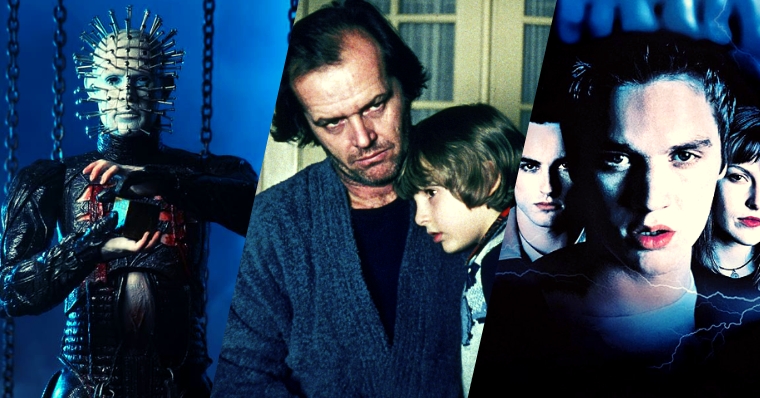The world of horror cinema is a rich tapestry woven with ghastly ghouls, petrifying plots, and awe-inspiring artistry. It's a genre that has been capturing the hearts and adrenal glands of audiences ever since the first terrified scream echoed through a darkened theater. Over the years, this genre has been a hotbed for creative experiments designed to make your skin crawl, ranging from high-budget blockbuster scare-fests to low-key indie horrors. Some nailed the fear factor spot-on, while others, let's be honest, missed the mark by a haunted mile. Now, in any genre, there are always those movies that—despite their brilliance or unique take on terror—get lambasted by critics. Yes, we're talking about films that, for one reason or another, failed to earn critical acclaim but have nonetheless etched themselves into the hearts of devoted fans. These underappreciated gems may not dominate headlines, but they have successfully carved out a niche as treasured keepsakes in the horror community. And so, we have a curated list of 8 terrific horror films that critics didn't warm up to—but that have found a cherished place among the fans of fear. Whether you're a genre purist or a casual horror hound looking for something spine-tingling, you might discover your next favorite among these unfairly maligned cinematic spookshows.
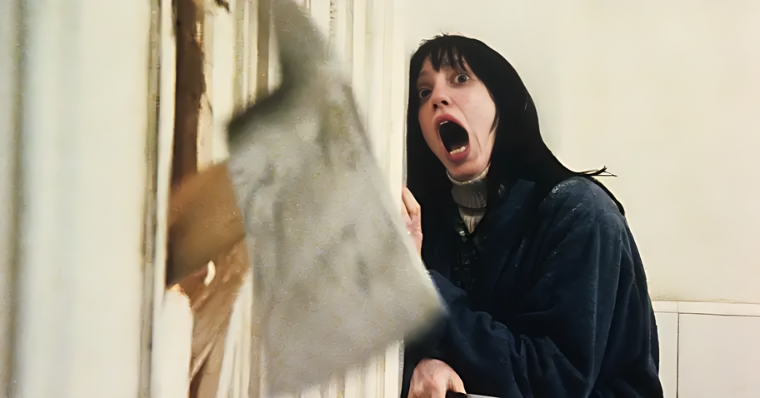
The Shining (1980)
Believe it or not, Stanley Kubrick's 1980 cinematic interpretation of "The Shining" wasn't always nestled on the throne of horror royalty. At the time of its release, the film suffered the indignity of lukewarm to downright negative reviews from notable publications like The New York Times, Variety, and The New Yorker. Heavyweight critics like Roger Ebert and Pauline Kael had less than flattering things to say about the movie. Even more astonishing, the film snagged two nominations in the first-ever Golden Raspberry Awards, also known as the Razzies. However, this initial wave of criticism eventually receded, replaced by a tide of appreciation that ultimately elevated the film to its now iconic status. "The Shining" was born from the mind of prolific author Stephen King, and its 1977 novel laid the groundwork for Kubrick's adaptation. While the narrative spine remained intact—Jack Torrance, played by Jack Nicholson, a writer battling alcoholism, takes a job as the off-season caretaker of the eerie Overlook Hotel in the snow-capped Colorado Rockies—the film diverges in crucial ways from its literary parent. Nicholson's character spirals into madness, endangering his psychic son Danny (Danny Lloyd) and his increasingly anxious wife Wendy (Shelley Duvall). King himself has expressed dissatisfaction with Kubrick's adaptation, particularly because it strayed from his original vision. After its release on May 23, 1980, in the United States and later in the United Kingdom on October 2, "The Shining" underwent multiple edits, shedding roughly 27 minutes from its initial runtime. The fluctuating reviews and Stephen King's own reservations seemed to cast a cloud over the film's success. Nevertheless, as the years marched on, public opinion shifted dramatically. The movie not only earned its well-deserved place in the pantheon of cinematic gems but also secured significant accolades. By 2012, it found itself ranked as the 75th greatest film ever in the Sight & Sound Directors' poll, and six years later, it received the honor of being preserved in the United States National Film Registry by the Library of Congress.
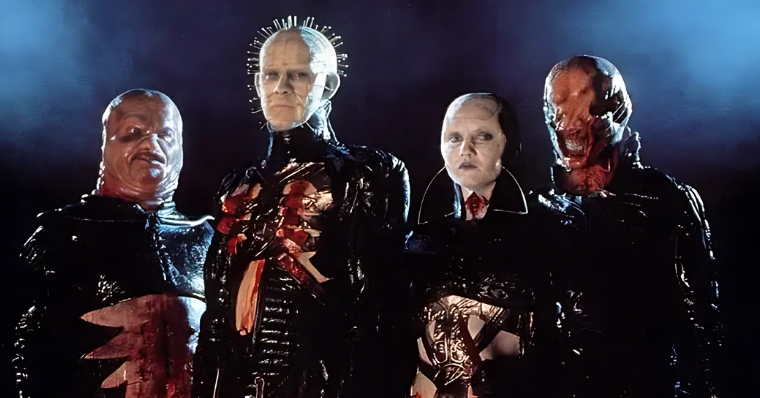
Hellraiser (1987)
When Clive Barker, a master of horror literature from the UK, ventured into filmmaking to adapt his own novella "The Hellbound Heart" in 1987, the result was nothing short of a head-spinning enigma. Given the title "Hellraiser," Barker's directorial debut broke ground as a pioneer in splatter and body horror, all while subtly infusing queer elements in a time that had yet to fully understand or embrace such a concoction. The film introduced audiences to the Cenobites, a group of sadomasochistic beings from another dimension led by the now-iconic character "Pinhead," portrayed by Doug Bradley. Summoned by a mystical puzzle box, these beings couldn't differentiate between pain and pleasure, setting the stage for a dark and twisted narrative. But the critics of the time weren't as fascinated. High-profile names like Roger Ebert labeled the film a "bankruptcy of imagination," awarding it a paltry one-and-a-half stars. The film premiered at the Prince Charles Cinema on September 10, 1987, and reactions were mixed to say the least. While some outlets like Melody Maker celebrated it as a pinnacle of British horror, others slammed it mercilessly. Nonetheless, the film made its financial mark, grossing $14.6 million. As with many cult classics, "Hellraiser" gave rise to a series of sequels—nine, to be precise. The quality of these sequels took a nosedive despite Doug Bradley reprising his role as Pinhead for the first seven. Yet, as the years rolled by, the original "Hellraiser" started to garner the appreciation it deserved. In hindsight, the film emerged as a genre-defying masterpiece that melded horror elements with queer aesthetics, establishing its place in the canon of cult horror cinema.
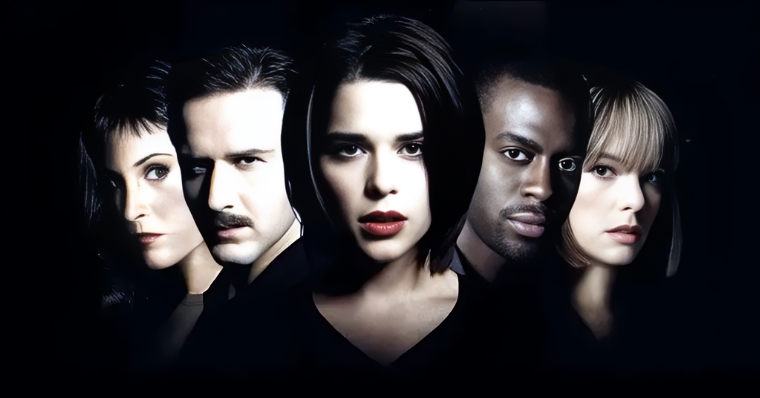
Scream 3 (2000)
In 2000, Wes Craven, the luminary director who had a knack for juggling terror and satire, presented us with "Scream 3." Yes, this third installment of the genre-redefining franchise had all the hallmarks of a troubled production . For starters, it suffered from the unsolicited creative meddling of the Weinstein brothers. Add to that, the departure of the franchise's co-creator and writer, Kevin Williamson, was something akin to losing your compass in the wilderness. Now, the Rotten Tomatoes critics weren't kind—giving the movie a rather harsh 41% approval rating. But let's not kid ourselves. This "worst in the saga" label that's often slapped onto "Scream 3" doesn't wholly sum up its complexity or foresight. This film was strangely prophetic, delving into the murkiness of Hollywood abuses years before the #MeToo movement became a cultural earthquake. The third chapter was somewhat of a departure, both in tone and substance, from its predecessors. Sure, it had the familiar faces like David Arquette, Neve Campbell, and Courteney Cox Arquette, but it also welcomed a robust cast including Parker Posey, Patrick Dempsey, and Scott Foley. Set three years after the harrowing events of "Scream 2," our protagonist Sidney Prescott, played by Campbell, is dragged out of self-imposed exile. Why? Because a new Ghostface killer is slashing through the cast of the meta-film within a film, "Stab 3." "Scream 3" straddled genres—it was part slasher, part comedy, part mystery. Its satirical eye critiqued the often absurd logic behind film trilogies. One key difference was the lighter touch on the horror and violence, a nod to the increased scrutiny of violent media content in the wake of events like the Columbine High School massacre. Over time, the narrative around the film has been shifting. Initially perceived as the weakest link in the chain, "Scream 3" has undergone a sort of critical reevaluation in recent years. Whether or not this third installment was initially intended to be the final act (it wasn't; "Scream 4" came along in 2011), its complex, often misunderstood legacy suggests it's worth another watch. Maybe it's time to reconsider this so-called "weakest" installment and acknowledge it as a chaotic but intriguing patchwork of themes and ideas that were, in many ways, ahead of their time.
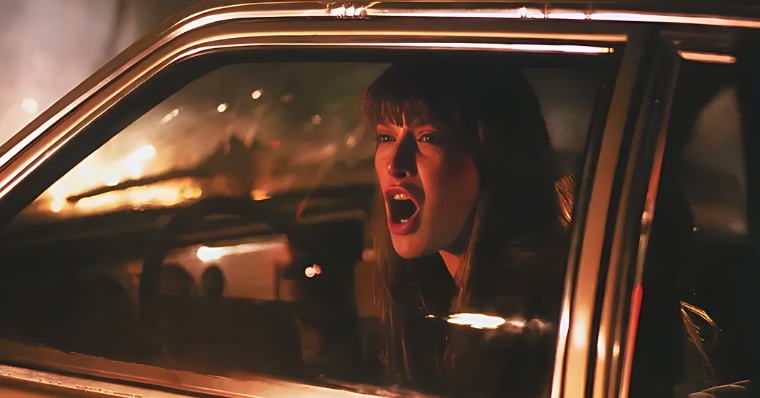
Final Destination (2000)
In the year 2000, the cinematic landscape was graced with a new twist on the slasher genre: "Final Destination." Forget masked marauders or supernatural entities; this film served Death itself as the looming antagonist. In this trailblazing story, a group of teenagers dodge a fatal accident thanks to a premonition, only to find that Death is not so easily swindled. The film immediately captivated audiences and spawned an astounding four sequels. However, film critics were far less enamored. "Final Destination" sits at a meager 36% approval rating on Rotten Tomatoes, with critiques largely focused on what was seen as "mediocre acting" and "flaws in its execution." Yet, criticism didn't stall the franchise's momentum; in fact, another installment is in the works. Directed by James Wong, who co-wrote the screenplay with Glen Morgan and Jeffrey Reddick, the film featured a compelling cast including Devon Sawa, Ali Larter, Kerr Smith, and the indomitable Tony Todd. Initially, the tale had humbler aspirations; it started as a spec script by Reddick for an episode of "The X-Files." But after some nudging by a colleague at New Line Cinema, it transformed into a feature-length script. Wong and Morgan, both experienced "The X-Files" scribes, became intrigued and took on the task of rewriting and directing the film—marking Wong's feature directorial debut. The filming process was transcontinental, with scenes shot in New York City, Vancouver, Toronto, and San Francisco. Despite the naysayers, "Final Destination" pulled in an impressive $10 million on its opening weekend, signaling its commercial viability. The franchise has since expanded into other media, including novels and comic books, further solidifying its imprint on the pop-culture zeitgeist. Despite the critical drubbing, the flick received its share of accolades, too. For example, it snagged the Saturn Award for Best Horror Film and Best Performance by a Younger Actor, which went to Devon Sawa. Not bad for a movie aimed at what some dismissively referred to as "the teen dating crowd." Reviews were paradoxically torn between labeling the film as "dramatically flat" while also acknowledging its ability to "generate a respectable amount of suspense." Some even found it "playful and energized enough to keep an audience guessing." This strange mix of elements makes the movie a somewhat enigmatic addition to the horror canon. So what gives? Why does a film with such a low critics' score persist in cultural relevance, with sequels and spin-offs, decades after its initial release? Perhaps it's the audacious concept of making Death the villain, or maybe it's the franchise's unabashed embrace of its genre's tropes while still finding fresh, often shockingly creative ways to off its characters. Either way, "Final Destination" has survived the scythe of its own grim reaper-like reviews to achieve longevity and commercial success. As another chapter is poised to join the saga, it's clear that this franchise, much like its relentless antagonist, just won't quit.

The Texas Chainsaw Massacre (2003)
In the early 2000s, the cinematic world experienced a tidal wave of horror film remakes. It seemed like every classic, spine-chilling story was getting a fresh, bloodier makeover. Among the front runners of this gory renaissance was "The Texas Chainsaw Massacre" from 2003. Directed by the budding Marcus Nispel and boasting a cast featuring Jessica Biel, Jonathan Tucker, Mike Vogel, and Eric Balfour, it aimed to give the new generation a fresh dose of terror. Critics, however, weren't fully on board. The film has a rather bleak approval rating of 37% on Rotten Tomatoes. Some dubbed it "an unnecessary remake that's more violent and far less terrifying than its predecessor." But before we jump to conclusions, it's essential to acknowledge that every horror film, no matter how divisive, finds its group of hardcore enthusiasts. This rendition of the chilling tale has its share of ardent defenders, who remain steadfast in their appreciation of its unique take on the franchise. And let's face it, any film that spawns a prequel must have done something right. Speaking of which, this film did lead to a precursor tale titled "The Texas Chainsaw Massacre: The Beginning." Peeling back the layers, it's evident that this 2003 version isn't just a mere copy-paste job. Directed by Marcus Nispel in his feature directorial debut, the screenplay was penned by Scott Kosar. The plot revolves around a group of young adults navigating the dangerous landscapes of rural Texas, only to cross paths with the fearsome Leatherface and his sinister family. Though it's a remake of Tobe Hooper's 1974 iconic film, it proudly stands as the fifth installment in "The Texas Chainsaw Massacre" franchise. Interestingly, many from the original film's crew decided to hop on this ride again. Hooper and writer Kim Henkel wore the co-producer hats, Daniel Pearl showcased his cinematographic prowess once more, and John Larroquette lent his voice again for those eerie opening intertitles. Despite the critical shade thrown its way, one can't overlook the film's commercial success. Raking in a whopping $107 million at the box office against a budget of a mere $9.5 million, it was evident that audiences were hungry for more chainsaw-fueled mayhem. This remake marked the maiden voyage of Platinum Dunes into the film production realm, and they didn't stop here. T hey carried their torch forward, shedding light (or should we say darkness?) on remakes of other beloved horror classics from the 20th century. In the ever-evolving world of horror, while some purists may cling to originals, it's undeniable that remakes, when done right, have the power to reignite the terror and introduce iconic tales to newer generations. Whether it's Leatherface's relentless chase or the eerie hum of a chainsaw, some stories, original or remade, are simply timeless.

Seed of Chucky (2004)
In 2004, the cinematic universe was graced with yet another installment of the Child's Play franchise—welcome to the world, "Seed of Chucky." Crafted by the franchise's very own architect, Don Mancini, this film took the series to new and, let's just say, intriguing territories. Child's Play had always juggled its tonal elements, teetering between sheer horror and dark comedy. Only in its fourth installment, "Bride of Chucky," did the series fully embrace its comedic underbelly. But if you ask fans to pinpoint when the franchise took a tumble in terms of quality, many would single out "Seed of Chucky." Why the criticism, you ask? Perhaps because "Seed of Chucky" was Mancini's directorial debut, or maybe it's the film's audacity to introduce more queer layers through the character of Glen/Glenda, the offspring of our favorite murderous dolls, Chucky and Tiffany. Hold your horses—did we just say queer layers? Indeed, we did. Mancini decided to broaden the horizons, offering audiences a doll who doesn't quite fit into societal norms. With a Rotten Tomatoes approval rating sitting at a lackluster 34%, you might think this film is a complete washout. But here's where things get intriguing. This divisive film actually laid down the tracks for the franchise's future and has been frequently cited in the ongoing "Chucky" TV series. "Seed of Chucky" isn't merely another iteration; it's the fifth chapter of a legacy and the immediate sequel to 1998's "Bride of Chucky." It also made history for being the first film in the franchise distributed by another company since the original "Child's Play." And it didn't just stop at a new distribution channel; the film pulled in an ensemble cast featuring Jennifer Tilly, Redman, Hannah Spearritt, John Waters, Billy Boyd, and the iconic voice of Brad Dourif for Chucky. Set six years after its predecessor, the story follows young Glen/Glenda in a quest to resurrect his chaotic parents, and yes, mayhem ensues. Filmed in Romania, "Seed of Chucky" further distanced itself from the pure horror roots of the early Child's Play films, leaning more toward a horror-comedy hybrid. It was also the final curtain call for the franchise's original storyline in theaters. Subsequent films would opt for a direct-to-video route, at least until the 2019 reboot shook things up. The financials? The film garnered over $24 million against a $12 million budget, affirming that despite its mixed reviews, it managed to carve out a niche audience. And the story didn't end there. The film's narrative threads were picked up in another sequel, "Curse of Chucky," which made its debut on home video and Netflix in 2013. In the realm of horror, lines are often blurred, genres are remixed, and iconic characters are continually reinvented. While "Seed of Chucky" may not be everyone's cup of tea, it's hard to deny its impact, its audacity, and its role in paving the way for what the Child's Play franchise could and would become.
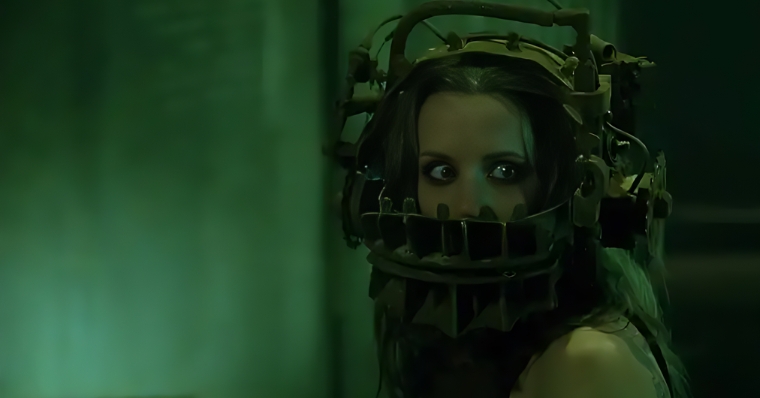
Saw (2004)
In 2004, the realm of horror cinema got a shocking jolt of adrenaline with the release of "Saw." Before James Wan became a household name with spine-chilling franchises like "The Conjuring" and "Insidious," he kicked off his directorial journey with this mind-bending thriller. For those not in the loop, "Saw" was the genesis of a sprawling franchise, and it thrust audiences into the twisted psyche of the now-infamous serial killer, Jigsaw. Now, the "Saw" series isn't just your run-of-the-mill slasher series. It redefined horror by shaping a sub-genre now lovingly (or not-so-lovingly) referred to as "torture porn." A controversial blend of intricate plot twists and gruesome scenarios, the movie was, surprisingly, a massive hit at the box office. However, winning over critics was a different story. Sitting at a 50% approval rating on Rotten Tomatoes, "Saw" had its fair share of detractors. And as more sequels rolled out, that approval rating took a bit of a nosedive. A little backstory on "Saw" — the film's narrative isn't as straightforward as one might think. Its allure lies in its nonlinear plot, which delves deep into the machinations of the Jigsaw Killer. Jigsaw wasn't your typical serial killer. He tested his victims' will to survive through diabolical "games" that demanded they inflict unspeakable pain on themselves. The core storyline zeroes in on Jigsaw's most recent captives (played by Whannell and Elwes), trapped in a dingy, run-down bathroom with a life-or-death choice hanging over them. "Saw" made its debut at the 2004 Sundance Film Festival and later saw a wider North American release by Lionsgate. The movie might have split critics down the middle, but there's no denying its box office success, raking in a cool $103.9 million worldwide. Fast forward to its tenth anniversary, and "Saw" was re-released in select theaters. And for those still craving more, the series continued with "Saw II" in 2005, and there's even buzz about "Saw X" hitting screens in September 2023.
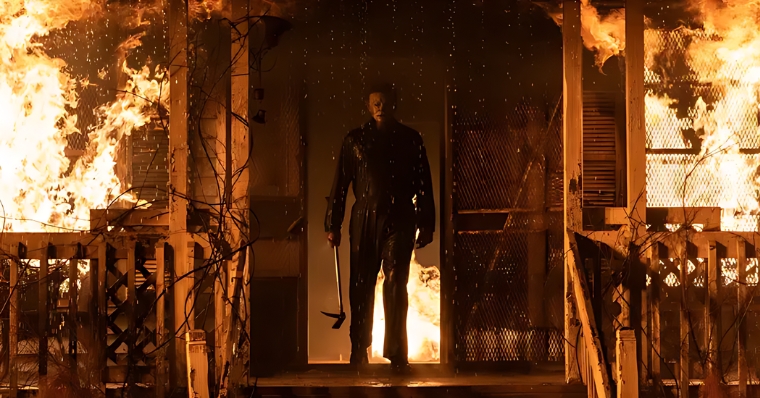
Halloween Kills (2021)
In 2021, the horror-sphere got another sequel to gnaw on with the release of "Halloween Kills," directed by David Gordon Green. Hot on the heels of the rather well-received "Halloween" from 2018, there was an electric sense of curiosity about what Green would conjure up next with the iconic masked menace, Michael Myers. Fans around the globe had their eyes glued to this new trilogy, which was meant to roll on with "Halloween Kills" and culminate in "Halloween Ends." However, the film found itself in a bit of a quagmire, coming under fire from both critics and general audiences. The critical consensus on Rotten Tomatoes slumped at a less-than-stellar 39%, while the audience's score was somewhat more forgiving at 66%. Despite the mixed feelings and a smattering of negative reviews, "Halloween Kills" stands as one of the franchise's most audacious, unorthodox, and boundary-pushing installments. It expanded the narrative lens to focus not just on the perennial duo of Michael and Laurie Strode but also on the collective trauma that haunts the town of Haddonfield. The film stars Jamie Lee Curtis reprising her role as Laurie Strode, with James Jude Courtney stepping back into the ominous shoes of Michael Myers. The supporting cast wasn't too shabby either, featuring Judy Greer, Andi Matichak, and Will Patton, who all returned from the 2018 film. New faces included Anthony Michael Hall and Thomas Mann, further enriching the on-screen ensemble. "Halloween Kills" made its grand debut at the 78th Venice International Film Festival on September 8, 2021, before sweeping across US theaters on October 15, 2021, under the banner of Universal Pictures. It was also made available for streaming on Peacock's paid tiers for a 60-day window. Despite the polarizing reviews, the film raked in an impressive $133 million worldwide against a production budget of $20 million. Looking ahead, the trilogy wrapped up with "Halloween Ends," which slashed its way into theaters on October 14, 2022. Whether it's the timeless aura of Michael Myers or the communal dread that permeates Haddonfield, "Halloween Kills" served as a chaotic, visceral exploration of both. It may not have won universal acclaim, but it undeniably left an indelible impact on the franchise, warranting at least a watch for those who revel in such skin-crawling sagas.









